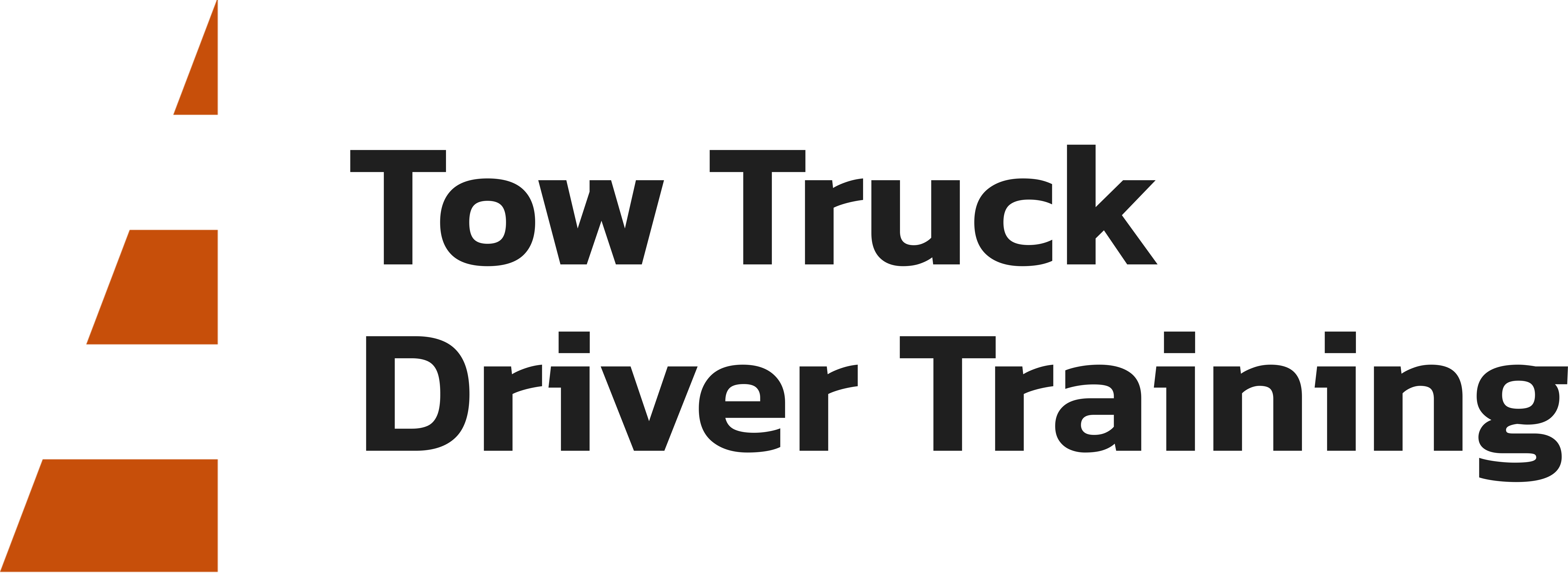HD Lift & Winch
Oftentimes, we’ll have tractor trailers that leave the roadway and maybe travel down a steep embankment and need to be recovered. I personally have recovered casualties in this situation when the driver failed to lock the parking brakes in the tractor trailer rolled away from wherever it was parked. In any case, when a tractor-trailer is over a steep embankment and must be recovered backwards, the operator is going to observe that as the casualty is winched backwards up the embankment, the first thing to come into contact with the ground as the grade changes is the landing legs at the trailer.
In this recovery technique we’re going to demonstrate how a combination of wreckers positioned on each side of the casualty can overcome its resistance pulling it backwards up the embankment and actually lift the tractor-trailer over top of any obstruction. This particular technique depends on lifting or elevating the front of the tractor trailer while winching it backwards up the embankment. As with any recovery the first job is to identify the casualty’s static weight, then calculate the resistance. Only then will the operator know what size and grade rigging to install to overcome the casualties resistance.
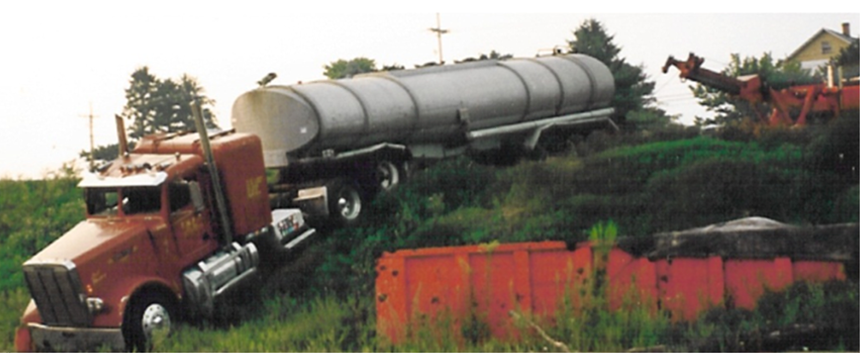
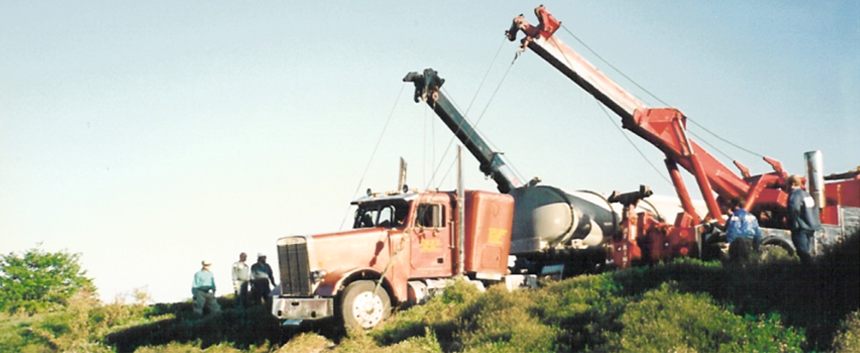
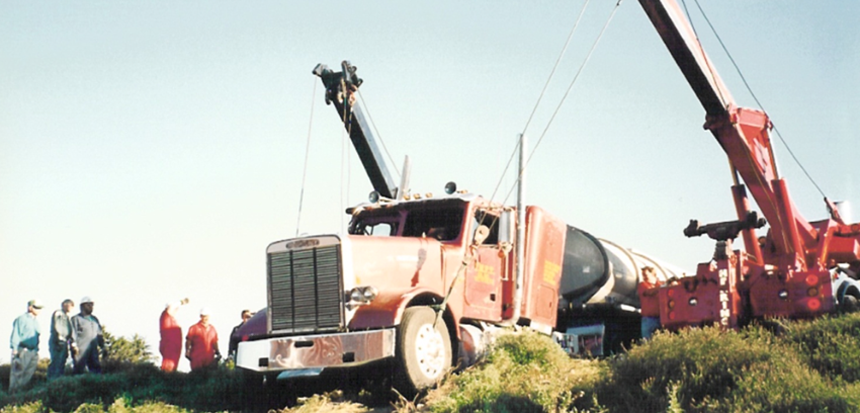
To recover this casualty and winch it backwards up the embankment, a heavy-duty tow truck with sufficient structural capacity should be positioned on either side of the casualty. The first place that the operator will rig the tractor trailer is the steering axle. This is so that when the winch lines are deployed and secured to the steering axle, the elevated booms will cause a lift on the front axle of the tractor trailer. We want to do this so that the nose of the trailer can also be raised.
The second piece of rigging to install on each side of a tractor-trailer, is ringing that will withstand the resistance as the tractor-trailer is pulled backwards. This rigging is going to be located on the frame at the rear of the tractor. You need to make sure that when the rigging passes by the nose of the trailer along the lower rail on the sides of the trailer, that you’ve protected the casualty and your ringing from abrasion. Oftentimes rigging can be damaged when it contacts the load or it moves as the load moves.
In this recovery technique the operators of the tow truck should remain in constant communication. You’ll notice that as the winching continues, the front of the trailer tractor will be lifted and if a winch on one side of the tractor-trailer gets a head of a winch on the other side, it will start to turn the nose of the trailer. You should winch in a coordinated manner that keeps the tractor and the trailer in line so that when she backwards up the embankment it doesn’t turn or articulate underneath the trailer.
While winching this tractor trailer backwards up the embankment, the operator should keep the nose of the tractor elevated. This will help keep the landing legs of a trailer out of contact with the ground. Remember, if the landing legs come into contact with the ground as the grade change, additional resistance will be encountered. Keeping the landing gear off out of contact with the ground will help keep resistance lower.
You may find it as you attempt to complete this recovery, that you can’t lift the steering axle of the tractor because the combination vehicle wants to continue sliding backwards as you apply force through the winches. It’s important that the front of the tractor be kept elevated so that the landing gear can clear the grade change. You may have to apply additional resistance to the rear of the combination unit take keep the front of the tractor elevated. A third tow truck attached to the rear of the casualty slightly applying its brakes may help you to more resistance and allow the nose of the tractor to be kept elevated throughout the recovery process.
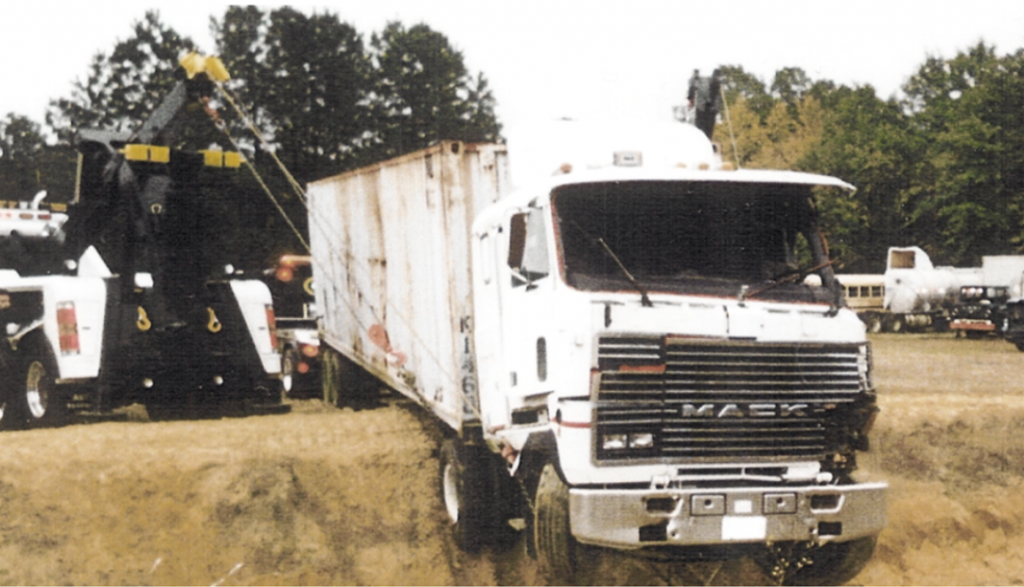
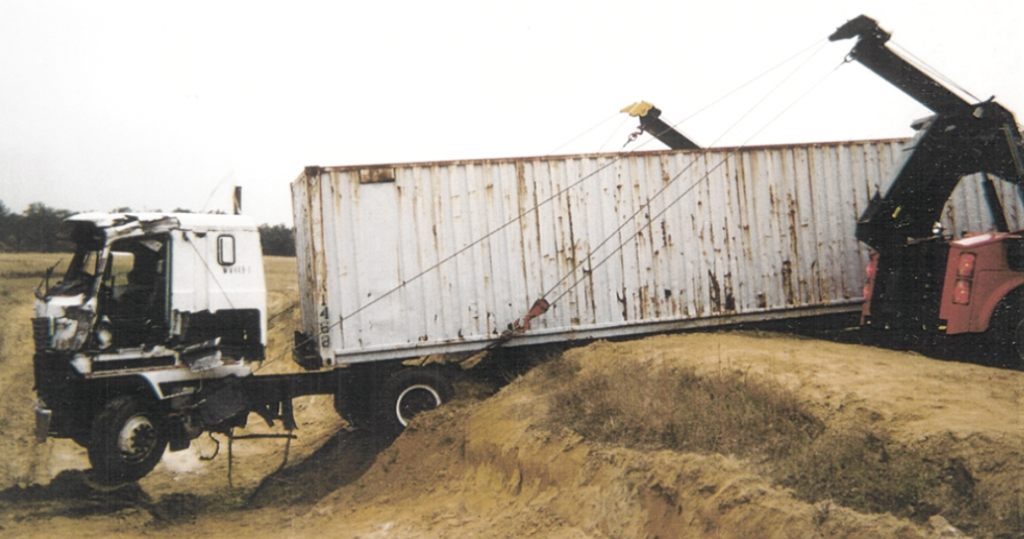
The lift and which technique is not limited to commercial combination vehicles. Any casualty located over an embankment can be rigged in this manner. Attaching multiple parts of line to the casualty will help keep line loads lower. It will also help keep the wire rope within its working load limit. Lifting the casualty as you winch it up the embankment could result in a successful outcome. Consider this type of rigging if you encounter a casualty that’s located over an embankment.
